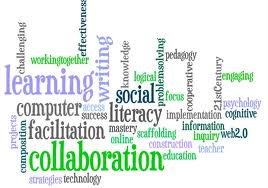Computer-Supported Collaborative Learning
Computer-Supported Collaborative Learning (CSCL) is one of the most promising innovations to improve teaching and learning with the help of contemporary information and communication technology. Most recent developments in CSCL have been called eLearning 2.0 but the concept of collaborative or group learning whereby instructional methods are designed to encourage or require students to work together has been around much longer.
It is widely agreed to distinguish collaborative learning from the traditional “direct transfer” model in which the instructor is assumed to be the distributor of knowledge and skills, which is often called eLearning 1.0, even though this direct transfer method most accurately reflects Computer-Based Learning systems (CBL). 
Blogs, wikis, and Google Docs are commonly used CSCL mediums within the teaching community. The ability to share information in an environment that is becoming easier for the lay person has caused a major increase of use in the classroom. One of the main reasons for its usage states that it is “a breeding ground for creative and engaging educational endeavors.”
Using Web 2.0 social tools in the classroom allows for students and teachers to work collaboratively, discuss ideas, and promote information. Blogs, wikis, and social networking skills are significantly useful in the classroom. After initial instruction on using the tools, students also reported an increase in knowledge and comfort level for using Web 2.0 tools. These collaborative tools additionally prepare students with technology skills necessary in today’s workforce.

Recent Comments